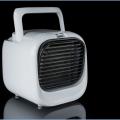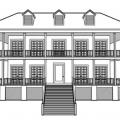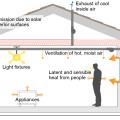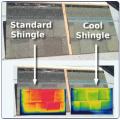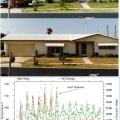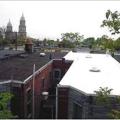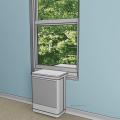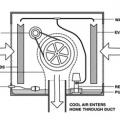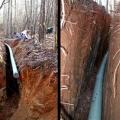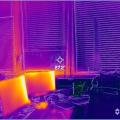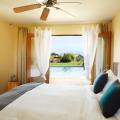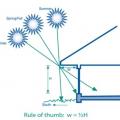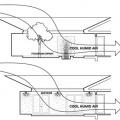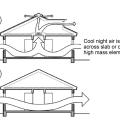Showing results 51 - 70 of 70
Small, battery-powered evaporative coolers can be appropriate for personal cooling in arid climates (only)
Sources of heat gain in a house include solar gains, infiltration, conduction through walls and roof, occupants, and internal equipment
Sources of heat gain in a house include solar gains, infiltration, conduction through walls and roof, occupants, and internal equipment
The cool shingles on the right have been coated with a ceramic coating to reflect near-infrared radiation, resulting in a cooler roof as shown by these thermal images (red and yellow are hotter, green and blue are cooler).
The existing dark tile roof on this home (top photo) was covered with a light -colored coating on day 6 (middle photo), resulting in a significant reduction in attic temperature and cooling energy consumption (bottom)
The IR image on the right shows the sun is heating the southeast-facing wall of this concrete-block house to 36C (97F); this corner of the home would not be a good place for a cool room due to lack of shading and insulation
The white TPO membrane roof on the row house on the right performs extremely well at reflecting solar energy and maintaining cool surface temperatures while the black EPDM membrane roof on the left heats up rapidly in the sunlight
This depiction of a saddle installed window heat pump does not obstruct window use and provides fairly quiet 120 Volt operation
This diagram provides a more realistic view of how a typical direct evaporative cooler operates
This experimental earth tube is 220 ft long, 8 inches in diameter, and is buried 10 feet deep
This experimental radiative/evaporative hybrid cooling system uses water to reject heat at night through radiation and evaporation
This infrared image shows little heat gain from north-facing double-pane windows with blinds, but significant heat output from computer monitors
This MSHP operates with 120 volts power, has an EER of 18 Btu/Wh, uses about 800 W at full output, and operates remotely with a smart home control system
This room has several passive and low-energy cooling features including a ceiling fan, fully operable French doors, window shading, an outdoor water feature, and light-colored hard-scaping.
This search for metal roofing products on the CRRC Rated Roof Products Directory highlights the initial and 3-year aged SRI values for each product
Using outdoor misters or spray fountains can cool the outside air before it enters the house
Wall surfaces having high solar reflectance and high thermal emittance will remain cooler when exposed to direct sunlight.
Whole-house fans or wind-driven cross ventilation can be used to draw air across thermal mass for a night flush strategy
